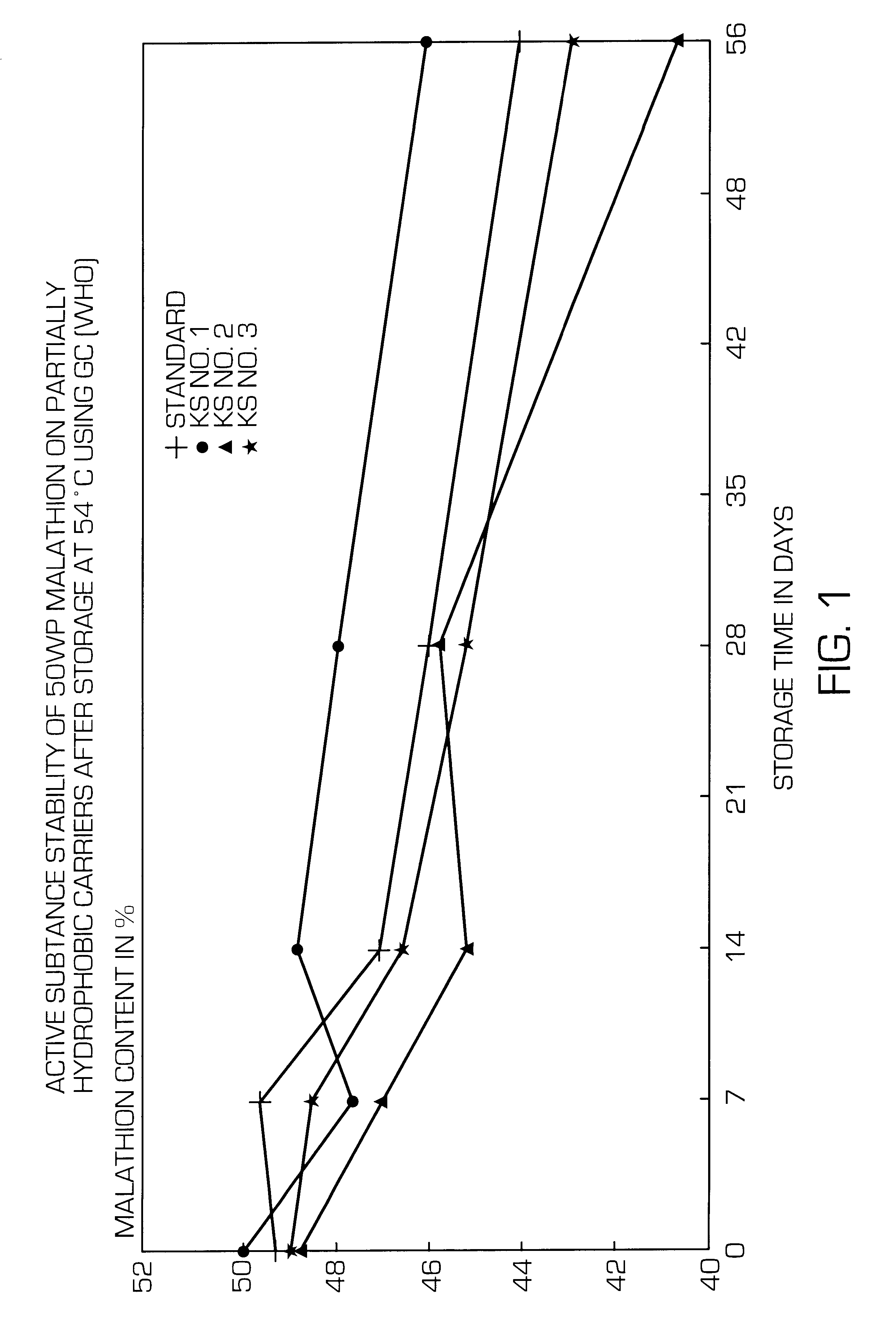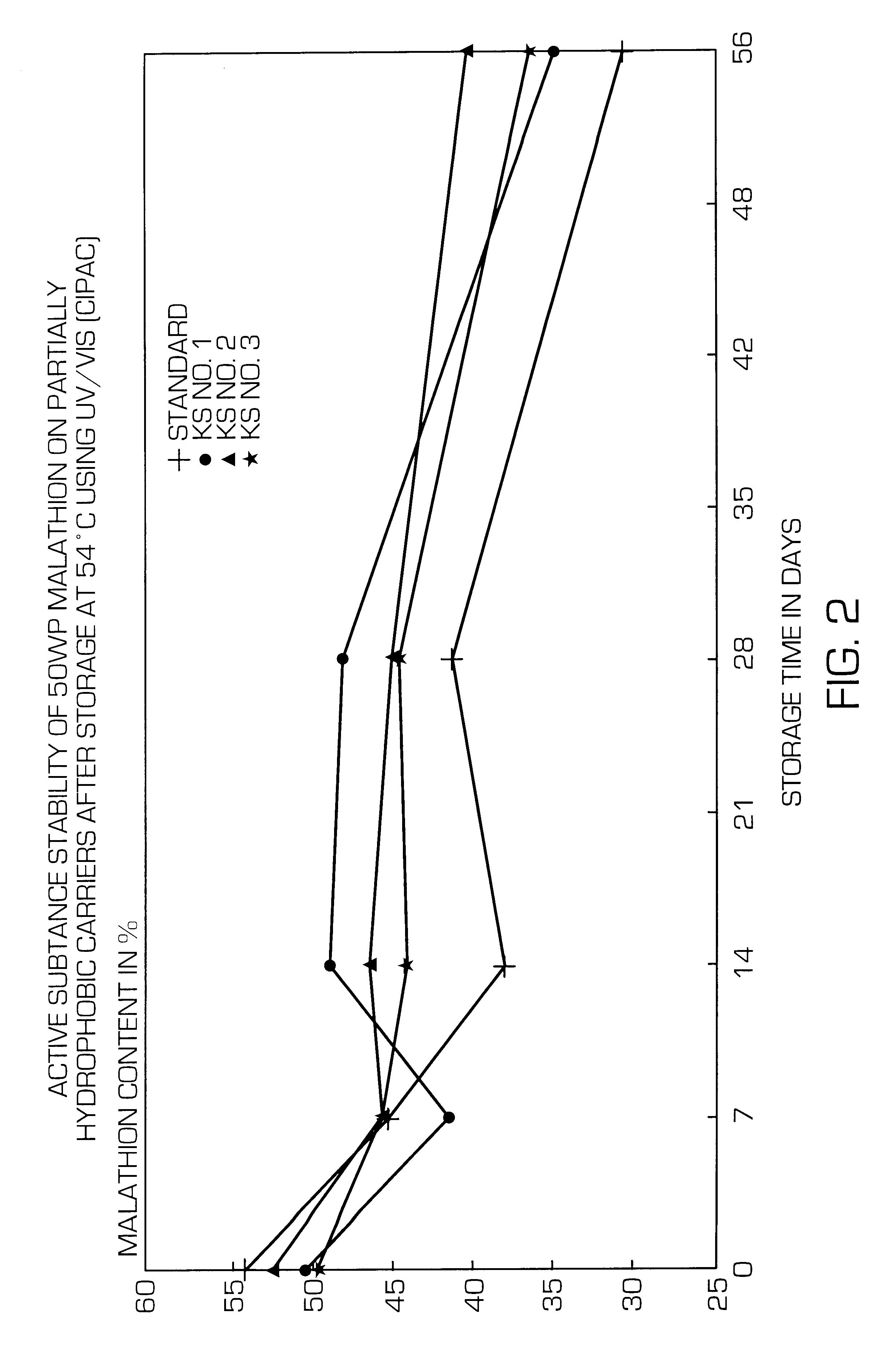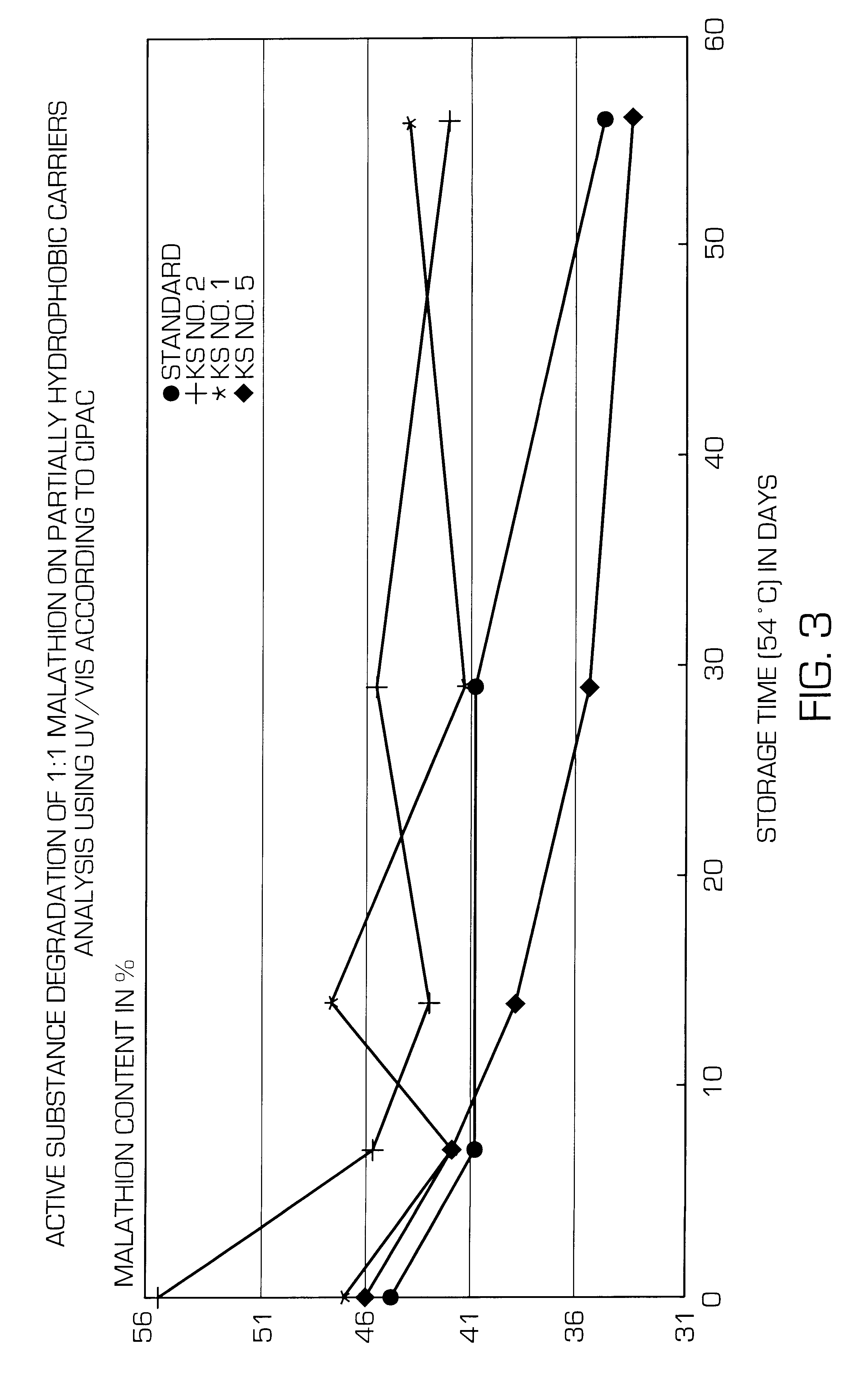Partially hydrophobic precipitated silicas
a technology of precipitated silicas and hydrophobic silicas, which is applied in the direction of phosphorous compound active ingredients, silicon compounds, biocide, etc., can solve the problems of silica sediments out, reduced active substance storage stability, and disadvantage of large amount of wetting agent in the formulation
- Summary
- Abstract
- Description
- Claims
- Application Information
AI Technical Summary
Problems solved by technology
Method used
Image
Examples
example 1
Storage of 50 WP Malathion and Active Substance Stability
Preparation as 50 WP Malathion
A premix is first prepared in the ratio 1:1 using Wessalon S and the wetting agent Ampholak XI0. 28 g of the partially hydrophobic precipitated silicas as well as Wessalon S as comparison substance are briefly fluidized in a 500 ml Quickfit stirring apparatus. 52.1 g malathion (96%) are then gradually added dropwise before adding 6 g of the premix as well as 3.0 g Empikol LZ / P dispersing agent. 10.9 g filler (Rollokalk) are subsequently mixed therewith and the mixture is homogenized using a Turbula mixer.
The samples are stabilized by storing them for 4 days at room temperature. The initial values of CIPAC suspension and the malathion contents are then determined according to CIPAC. The initial values of malathion according to WHO and isomalathion according to WHO are also determined after 4 days and the samples then stored at 54.degree. C. and measured after 7 days, 14 days, 28 days and 56 days.
Te...
example 2
Storage of 1:1 Malathion Concentrates and Active Substance Stability
The active substance solution (96%) is applied to the partially hydrophobic carrier in a ratio of 1:1. This mixture is then tested for storage stability. The values obtained in this manner are exclusively attributable to the effect of the carrier.
The tests employed in the examples section are described as:
Malathion 1:1 Formulation
28 g malathion (96%) are added dropwise within 30 minutes to 28 g carrier and then post-stirred for 3 minutes and mixed at a medium setting in a Turbula mixer for 5 minutes.
It is striking that the mixtures are markedly drier compared to the previously formulated 50 WP malathion (28 g hydrophobic carrier+52.1 g malathion+residual formulation constituents).
Testing Malathion Content According to CIPAC 12 / 3 (MI) 1 by Means of UV / VIS Before and After Storage at 54.degree. C.
Storage by analogy with 50 WP malathion.
Testing Malathion Content According to WHO / SIF / 10.R5 by Means of GC Before and Afte...
example 3
Preparation of the Defoaming Dispersions
To prepare the 5% defoaming dispersions 57 g of the corresponding oil, for example Shell Risella G 118 (now Shell Risella G 18), viscosity 40 cSt., are prepared in 250 ml beakers, 3 g of the silica of the invention or of Sipernat D10 are then added and carefully stirred together. Dispersing then occurs using an Ultra Turrax T50 at 10000 rpm for 5 minutes.
Stability Testing of the Defoaming Dispersions
For this purpose the still hot dispersions are filled into 100 ml glass cylinders, stored in a vibration-free location at room temperature and any possible phase separation recorded at regular time intervals (value in ml clear oil phase).
FIGS. 6 and 7
FIGS. 6 and 7 show that the precipitated silica of the invention, worked into mineral oil and silicone oil, shows no phase separation at all after 3 months. A considerable phase separation is already encountered with the known Sipernat D10 both used oils after just one month.
Defoaming Testing Using Lat...
PUM
| Property | Measurement | Unit |
|---|---|---|
| Fraction | aaaaa | aaaaa |
| Fraction | aaaaa | aaaaa |
| Fraction | aaaaa | aaaaa |
Abstract
Description
Claims
Application Information
 Login to View More
Login to View More - R&D
- Intellectual Property
- Life Sciences
- Materials
- Tech Scout
- Unparalleled Data Quality
- Higher Quality Content
- 60% Fewer Hallucinations
Browse by: Latest US Patents, China's latest patents, Technical Efficacy Thesaurus, Application Domain, Technology Topic, Popular Technical Reports.
© 2025 PatSnap. All rights reserved.Legal|Privacy policy|Modern Slavery Act Transparency Statement|Sitemap|About US| Contact US: help@patsnap.com



